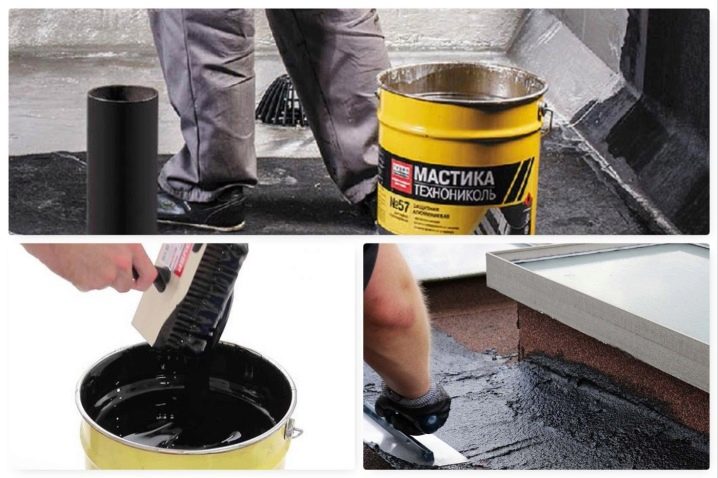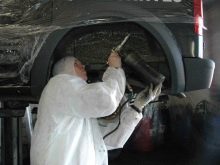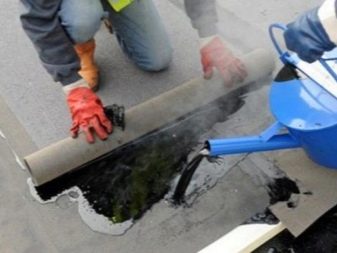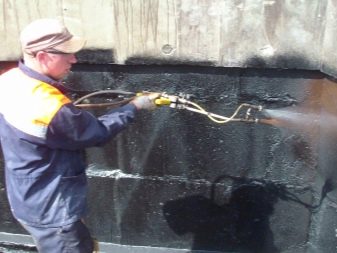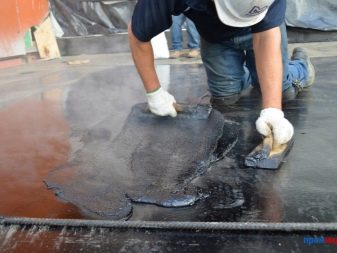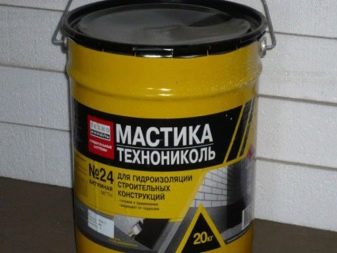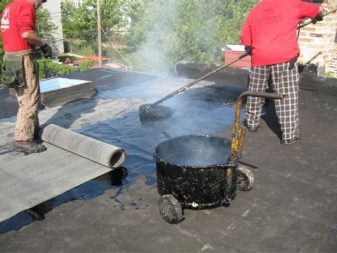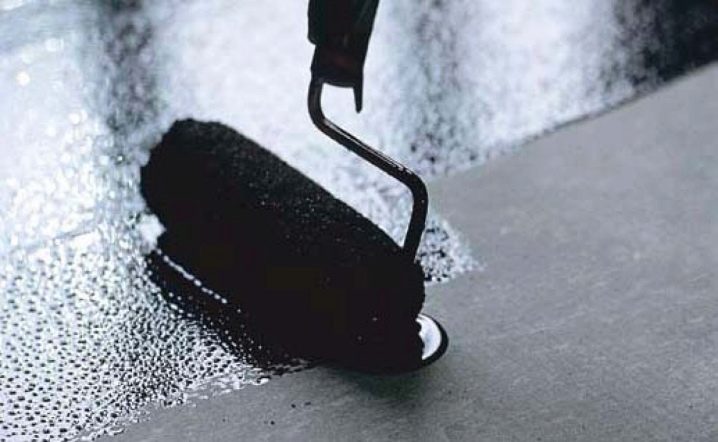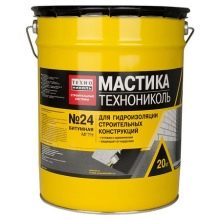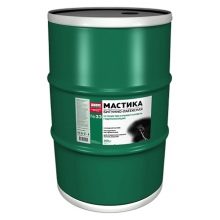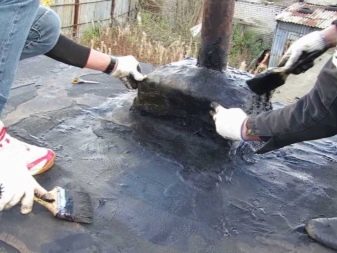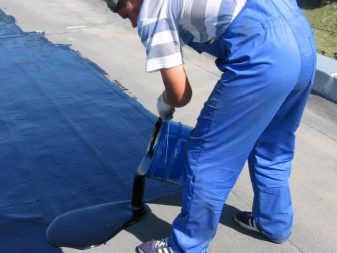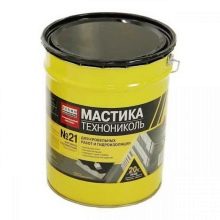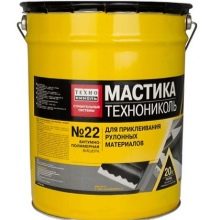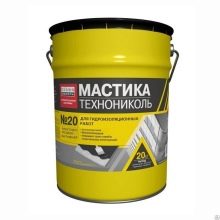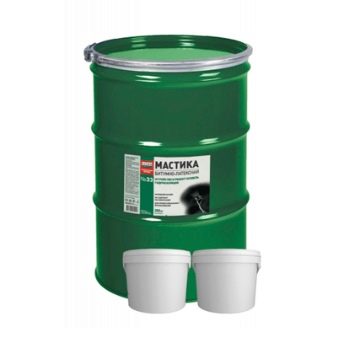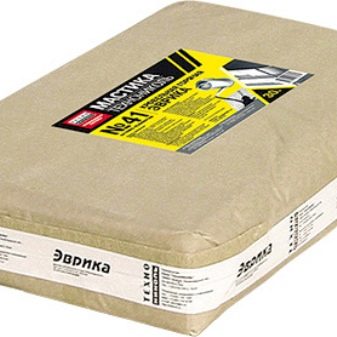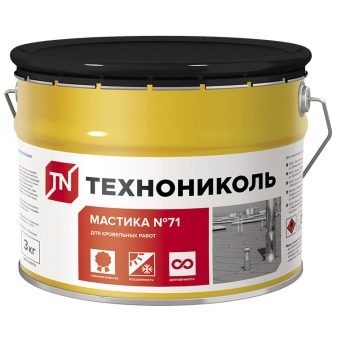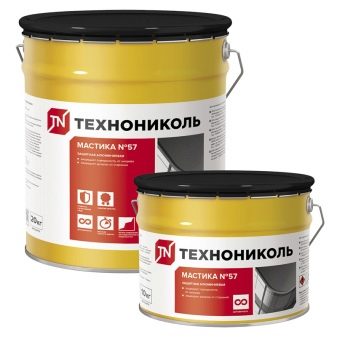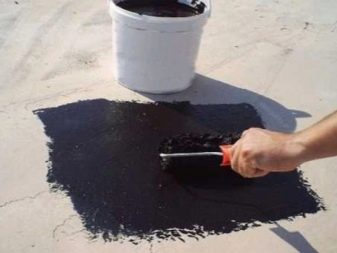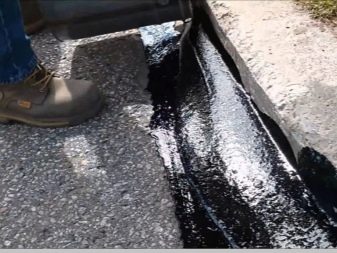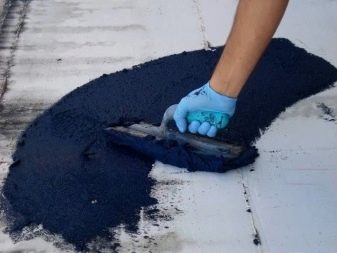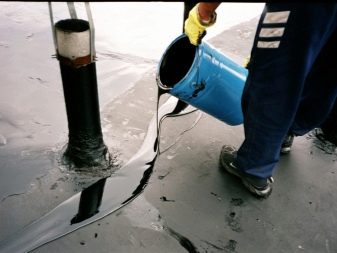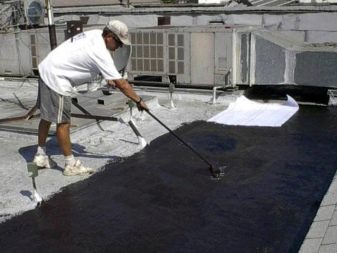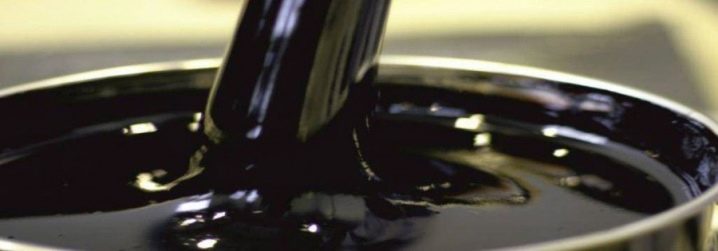Features of bitumen mastic "TechnoNIKOL"
TechnoNIKOL is one of the largest manufacturers of building materials. The products of this brand are in great demand among domestic and foreign consumers, due to the favorable cost and consistently high quality. The company produces a variety of materials for construction. One of the sales leaders are bitumen mastics, which will be discussed further.
Scope of application
Thanks to the bitumen mastic "TechnoNIKOL", it is possible to create seamless coatings that provide reliable protection of the object from moisture penetration. Often these materials are used for roofing.
They are used to:
- strengthening of shingles and fixing roll roofing;
- repair soft roof;
- protect the roof from overheating when exposed to sunlight.
Bituminous mastics are used not only for roofing. They are widely used in the arrangement of bathrooms, garages and balconies. Also, these materials are used in the elimination of interpanel joints, for waterproofing swimming pools, foundations, shower rooms, terraces and other metal, as well as concrete structures.
In addition, the mastic is able to protect metal products from corrosion. For this purpose, the composition covers various parts of car bodies, pipelines. Sometimes bituminous mixtures are used for reliable gluing of heat insulation plates, laying parquet or fixing linoleum coating. Mastic on the basis of bitumen is widely used in construction and repair work.
However, its main task is to protect the structure from the penetration of moisture from precipitation and increase the service life of the roof.
Features: advantages and disadvantages
Due to the use of bitumen mastic "TechnoNIKOL" it is possible to create a reliable protective film on the treated surface. This prevents the formation of seams or joints.Compositions based on bitumen can be applied on unprepared grounds: wet or rusty, thereby reducing the time of waterproofing works.
Possessing high adhesion, mastics quickly and reliably interlock with any surfaces: concrete, metal, brick, wood and others. Due to this feature, the applied composition will not peel off with time and will not swell.
Other advantages of bitumen mastic include the following characteristics:
- high tensile strength (especially for rubber and rubber compounds), due to which the base deformation is compensated (for example, preventing the "spreading" of joints during temperature fluctuations);
- a layer of mastic is 4 times lighter than roofing roll waterproofing;
- the possibility of using the composition on both flat and pitched surfaces.
The operational characteristics of the mastic "TechnoNIKOL" include:
- ease of application due to the elasticity of the material;
- economical consumption;
- resistance to insolation;
- resistance to aggressive substances.
All bitumen compositions have good physical and mechanical properties.And the inexpensive price and prevalence makes these materials available to any segment of the population.
The disadvantages of bitumen mastics are insignificant. The disadvantages include the impossibility of performing work during precipitation and the difficulty in controlling the uniformity of the applied layer.
Kinds
Under the brand name "TehnoNIKOL" produced many varieties of bitumen mastic used in various fields of construction. Such materials are classified by both composition and method of use.
The latter classification includes hot and cold mastics.
- Hot applied mastics are a plastic, uniform and viscous mass. The main components of the material are asphalt-like components and binding additives. On some packages there is an alphabetic label A (with the addition of an antiseptic) and G (a herbicidal component).
Hot mastic needs to be reheated (up to about 190 degrees) before applying to the work surface. After hardening, the tool forms a reliable, highly elastic shell that eliminates the risks of shrinkage during operation.The main advantages of the material include a homogeneous structure without pores, the ability to work at negative ambient temperatures.
Its disadvantages are the increase in construction time and high risks of fire associated with the heating of the bitumen mass.
- Cold-applied mastics are considered easier to use. They contain in their composition special solvents, giving the solution a liquid consistency. Due to this feature, the materials do not need pre-heating, which simplifies construction activities and reduces the costs associated with them.
In addition to these advantages, cold mastic is in great demand, due to the ability to dilute the composition to the optimum consistency and paint the solution in the desired color.
When hardening, the material forms on the surface a durable waterproofing sheath, characterized by resistance to precipitation, sharp temperature fluctuations and to the influence of sunlight.
Classification mastic composition
There are several types of cold-used bitumen mastics, classified by their constituent components.
- Solvent based. These are ready-to-use materials that are allowed to work at sub-zero temperatures. The coating applied to the surface hardens after a day due to the rapid evaporation of the solvent. The result is a monolithic waterproofing coating that reliably protects the structure from moisture.
- Water based. Water emulsion mastic is an environmentally friendly, fire-and explosion-proof products with no smell. It is fast drying: it lasts several hours for its complete hardening. Emulsion mastic is easy to apply, it is completely non-toxic. You can work with her indoors. The disadvantages of emulsions include the inability to use and store at low temperatures.
There are also several types of bitumen mastics.
- Rubber Highly elastic mass, which received the second name - "liquid rubber". Efficient, durable and weather resistant materials that can be used as standalone roofing materials.
- Latex. Contains latex in the composition, giving the mass additional flexibility. Such emulsions are subject to staining.Most often they are used for gluing the roll lining.
- Rubber. Includes a rubber fraction. Due to its anti-corrosion properties, it is used for waterproofing metal structures.
- Polymer The mastic modified with polymers has an increased adhesion to any bases, it is resistant to temperature fluctuations and adverse weather effects.
Also on sale you can find unmodified solutions. They do not contain improving additives, due to which they quickly lose their performance when heated, freezing, temperature changes and other factors. Such features do not allow the use of unmodified emulsions for the arrangement of the roof. Their main purpose is to waterproof the foundations.
In accordance with the number of components mastic can be one-component and two-component. The first - the mass is completely ready for application. Polyurethane bicomponent - materials that need to be mixed with a hardening agent. These compositions are designed for professional work. They have higher technical characteristics.
Product Overview
TechnoNIKOL produces an extensive line of bitumen-based mastics intended for various types of construction work. The most common waterproofing agents include some of them.
- Rubber-bitumen mastic "TechnoNIKOL Technomas" № 21The composition of which is made on the basis of petroleum bitumen with the addition of rubber, technological and mineral components, as well as solvent. Suitable for machine or manual application.
- "Road" number 20. It is a bitumen-rubber material based on petroleum bitumen and an organic solvent. It can be used at negative temperatures both indoors and outside.
- "Vishera" number 22 - it is a multi-component adhesive mass intended for fixing rolled coatings. Contains bitumen, modified polymers, solvents and special technological additives.
- "Fixer" number 23. Tile mastic with the addition of thermoplastic elastomer. The composition is used in construction as a waterproofing or adhesive agent.
- Water emulsion composition number 31. It is applied both to external, and to internal works.Produced on the basis of petroleum bitumen and water with the addition of artificial rubber. Apply with a brush or spatula. The best solution for waterproofing bathrooms, basements, garages, loggias.
- Water emulsion composition number 33. The composition added latex and polymer modifier. Designed for manual or machine application. Often used for waterproofing structures in contact with the ground.
- "Eureka" number 41. Made on the basis of bitumen using polymers and mineral fillers. Hot mastic is most often used to repair the roof. Insulating mass can also be used for processing pipelines and metal structures that have direct contact with the ground.
- Hermobutyl mass number 45. Sealing butyl rubber mass is white or gray color. Used to seal panel joints and metal joints of prefabricated parts.
- Protective aluminum mastic number 57. It has reflective properties. The main purpose is to protect roofs from solar radiation and the effects of precipitation.
- Sealing mastic number 71. The mass having a dry residue.Contains an aromatic solvent. It has adhesion to concrete substrates and bituminous surfaces.
- AquaMast. Composition on the basis of bitumen with the addition of crumb rubber. Designed for all types of roofing work.
- Non-hardening mastic. Homogeneous and viscous composition used for sealing and waterproofing exterior walls.
All mastic on the basis of bitumen corporation "TehnoNIKOL" are made in accordance with the standards of GOST 30693-2000. The roofing materials produced have a certificate of conformity and a quality certificate confirming high technical characteristics of building products.
Consumption
Bituminous mastic "TechnoNIKOL" have an economical consumption.
Its final figures will depend on many factors:
- from a manual or machine method of drawing (in the second case the expense will be minimum);
- from the material of which the base is made;
- on the type of construction activity.
For example, for gluing rolled materials, the consumption of hot mastic will be approximately 0.9 kg per 1 m2 of waterproofing.
Cold mastic is not so economical in consumption (compared to hot).For gluing 1 m2 of coating, approximately 1 kg of the product will be required, and to create a waterproofing surface with a layer of 1 mm it will be spent up to about 3.5 kg of weight.
Application details
The technology of waterproofing the surface with hot and cold mastic has some differences. Before applying both formulations, it is necessary to prepare the surface to be treated. It is cleaned from various contaminants: debris, dust, scale. Hot mastic must be heated to 170-190 degrees. The finished material should be applied with a brush or roller with a thickness of 1-1.5 mm.
Before applying cold mastic, the previously prepared surface should be primed. Such measures are necessary to increase adhesion. After the work done, the mastic should be thoroughly mixed to a state of homogeneous mass.
Cold-use materials are applied in several layers (the thickness of each should not exceed 1.5 mm). Each subsequent waterproofing shell should be applied only after complete drying of the previous one.
Tips for storage and use
When working with bitumen mastics, it is necessary to comply with all safety requirements prescribed by the manufacturer of building products.For example, when carrying out activities for waterproofing structures need to follow the rules of fire safety. When using mastic indoors, it is important to worry about creating effective ventilation in advance.
In order to perform surface waterproofing works with high quality, it is necessary to listen to the advice of experts:
- All work should be done only in clear weather at a temperature not lower than -5 degrees - for water-based mastics, and not lower than -20 - for hot materials;
- for fast and high-quality mixing of the composition, it is recommended to use a construction mixer or a drill with a special nozzle;
- the surfaces located vertically, without fail are subject to processing in several layers (at the same time weight should be applied in the direction from the bottom up);
- upon completion of the work process, all the tools used are thoroughly washed with any inorganic solvent.
In order for the mastic to retain all consumer properties declared by the manufacturer, it is necessary to take care of its proper storage. It should be kept closed in a dry place, away from open flame and heat sources.Aqueous emulsions must be protected from freezing. For this, it should only be stored at positive temperatures. When freezing the material will lose its performance.
About what features of bitumen mastic "TechnoNICOL" exist, see the following video.

